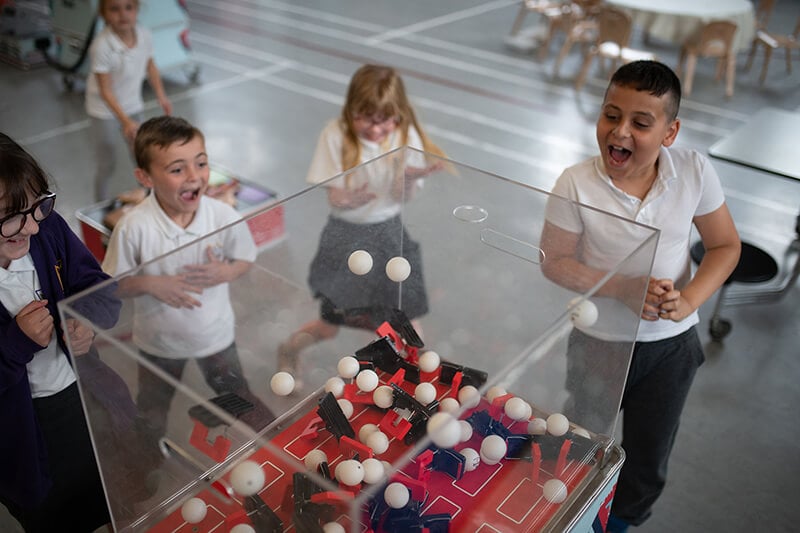What if museums became centres for climate research and action?
Museums are often seen as places of research, entertainment and debate, with their work often extending far beyond their own walls. The Museum of Open Windows, a new exhibition stall at Glasgow Science Centre, instead re-imagines museums as a networked infrastructure – they are a global set of tools and resources enabling citizen science that is aware to local cultures and environments.
The Museum of Open Windows touches on this idea by placing participants in the role of curators and researchers, with the Earth itself seen as an artefact in need of protection.
Rather than document faraway places, the Museum of Open Windows focuses attention on the nearby. The field guides below direct you on a guided walk of the local environment, encouraging you to engage directly with the ecosystem you inhabit and identify signs of climate change. Follow our steps below and take part
The Museum of Open Windows will become an exhibition stall at Glasgow Science Centre on 25th June, why not take part on your next visit?
Step 1: Use the podcast guides below

You can find green walks near you on the following websites:
Step 2: Go on the walk

Get your boots on, grab your camera phone and press play, we'll guide you through the walk.
Step 3: Collect samples

During your walk you will be capturing and recording elements of your surroundings to help build a living picture of the different ways climate change is affecting us all.
Step 4: Share your findings

Send your samples, they will feature as part of our exhibition.
There will be moments during the walk where you will be asked to take a photo or record a sound or a video to send to the Museum of Open Windows. Use WeTransfer to send your samples to [email protected]
This part of the walk starts on your doorstep. Look for things that have grown and things that have been built and study the relationship between the two. Search for lichen – a bioindicator species – and discover hidden meanings in the names of places.
For this part of the walk you will need to be in an open green space, like a park or a field. Observe a water droplet on its journey from ice cap to ocean. Tune your senses to help detect anthropogenic noise pollution. Learn about how desynchronisation threatens the dance of the bees.
Walk to a nearby patch of woodland or cluster of trees for this part of the field guide. Get up close to the wealth of life nurtured by a single tree and learn about mysterious underground communication systems used by forests. Find more nitrogen sensitive lichens and compare them to those you found near your house. Learn how alluring and fatal discarded litter can be to wildlife.
Now it’s time to start walking back home. What an adventure! Great work. You have opened up your senses to signs of climate change in the world around you.
Sharing information and resources is crucial in the global fight against climate change, the biggest challenge in the history of mankind. Share your new local climate knowledge – and this field guide – with a friend and talk to them about ways you can protect and improve your local environment.
Action from everyday people like you can inspire governments and big organisations to make the major changes that are needed to limit the impacts of climate change.
The Museum of Open Windows will be represented at the Reimagining Museums for Climate Action exhibition on level 2, Glasgow Science Centre. We’ll be exhibiting the data sent in by participants of the walk to open a window into other peoples’ worlds



